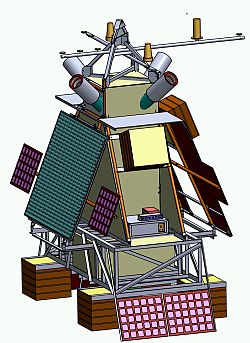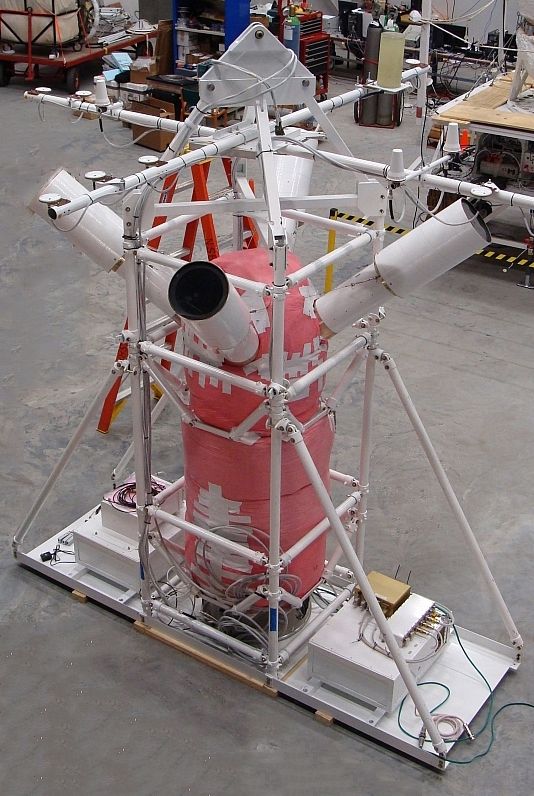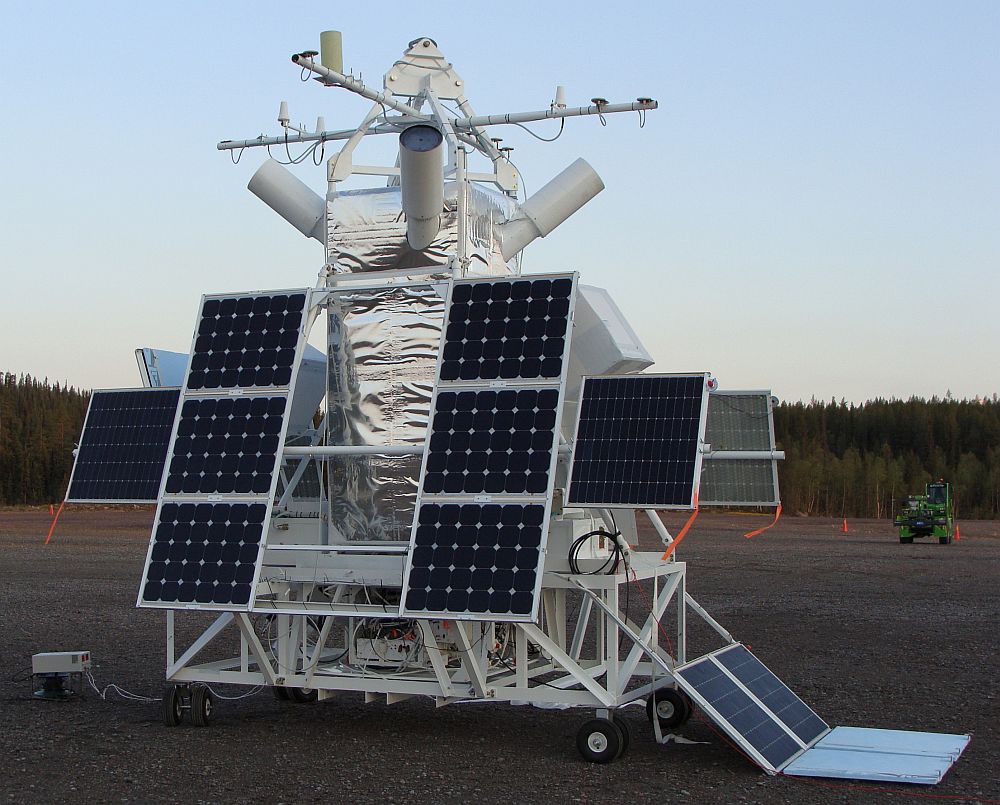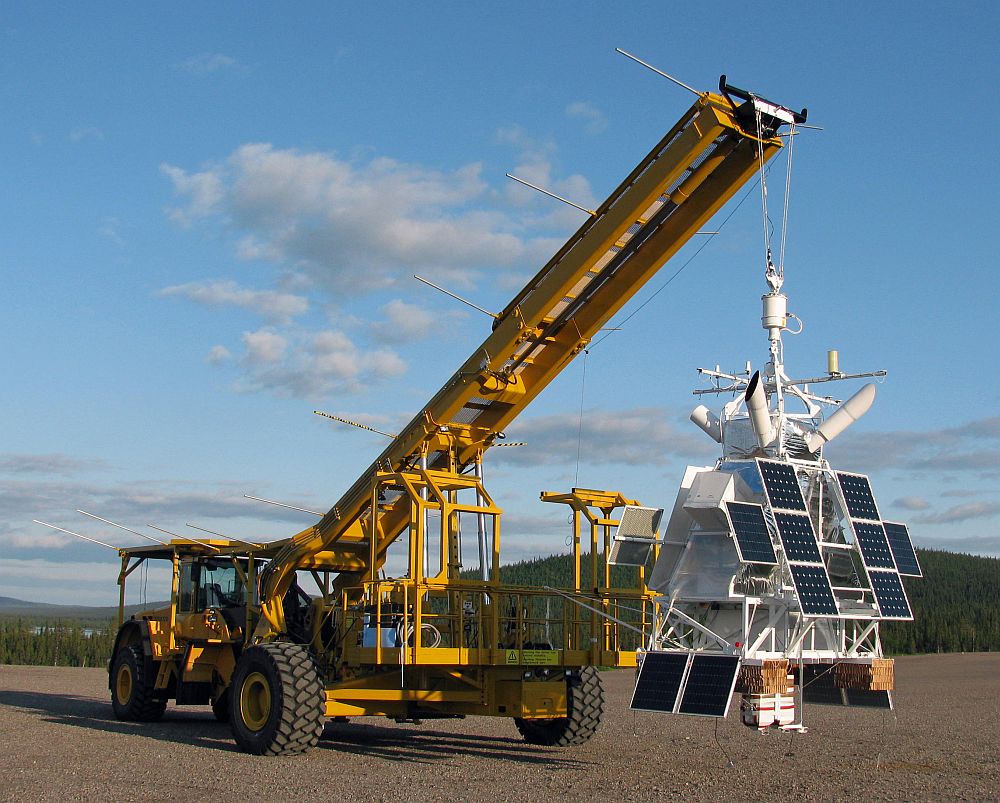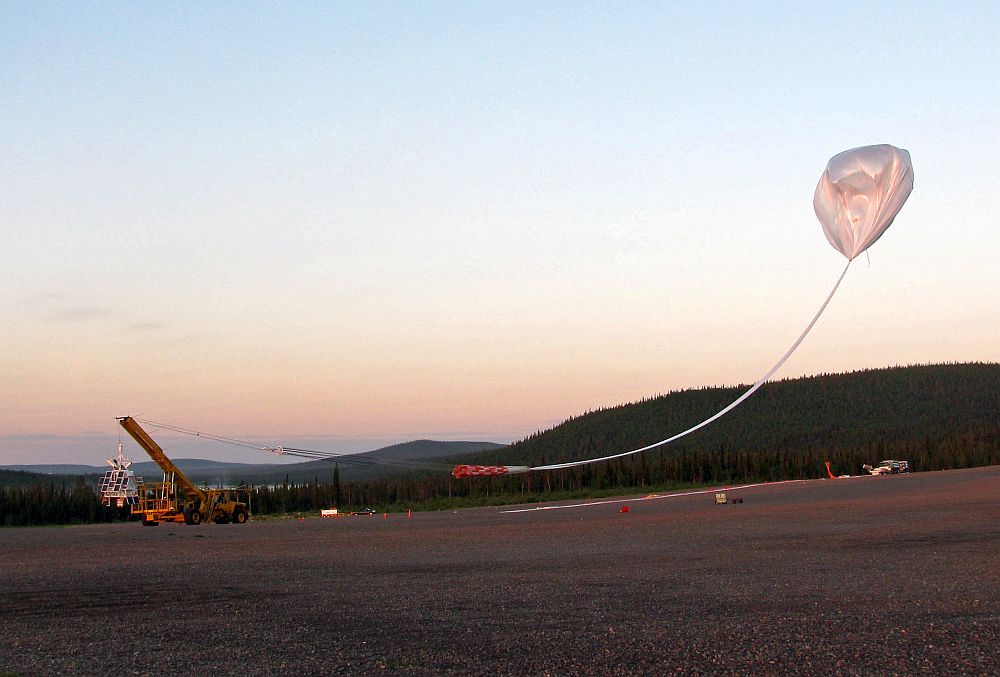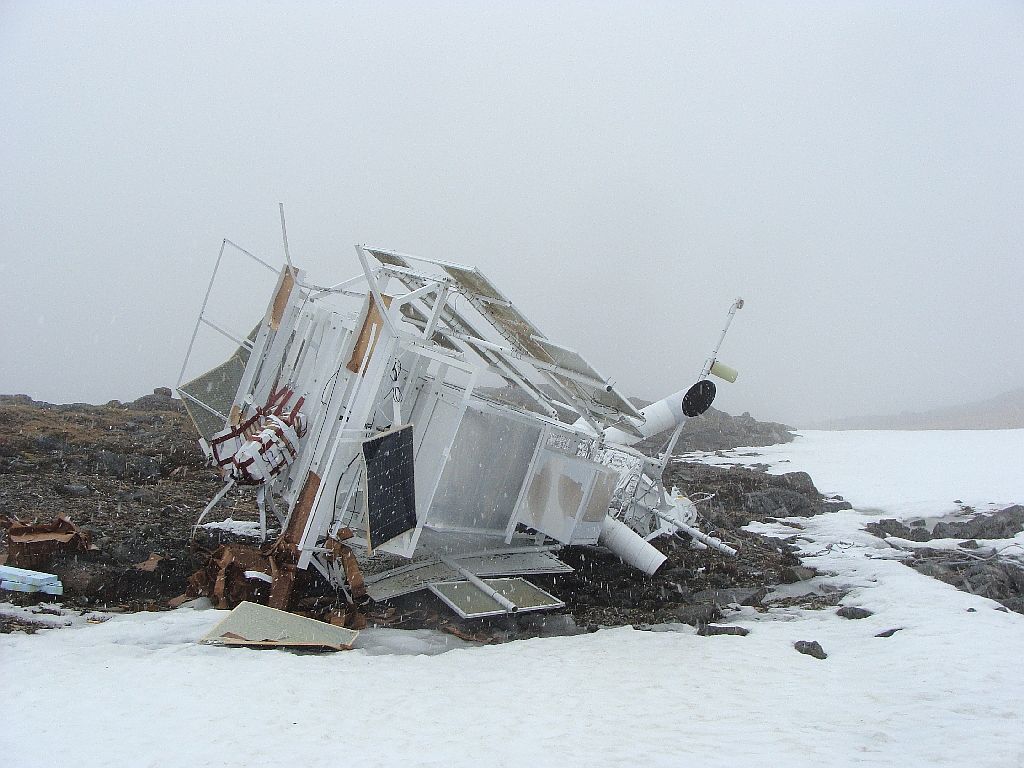Purpose of the flight and payload description
HIWIND stands for High-altitude Interferometer WIND Experiment and is the first balloon-borne Fabry-Perot interferometer specialled conceived for measure the daytime thermospheric winds by monitoring the neutral wind induced Doppler shift in the airglow emission O 630 nm.
At left can be seen an scheme of the instrument mounted on the gondola (click to enlarge).
The instrument measures four meters and weighs about 720 kilograms. Inside the central body -in an environmentally sealed pressure vessel- are located the different elements of the interferometer which form the optical bench: the lenses, an etalon chamber, the filter wheel and a CCD. The cylindrical body is covered by reflective space blankets during flight to provide protection from the extreme thermal environment that exists in the stratosphere. Near the top of the instrument, four light port tubes pointed upwards allow light measurements to be taken in four directions simultaneously to determine wind velocity and direction. The tubes are oriented at an elevation angle of 50º from the horizon to look at wind velocities well above HiWind's flight altitude.
The solar panels are continuously positioned to face the Sun during flight to provide power and shade critical areas of the instrument from intense solar radiation. A large radiator at the rear allowed precise thermal control of sensitive components inside the payload.
Pointing information is provided via differential GPS and a sun detector developed by NASA to drive a motorized rotator located between the payload and the balloon.
Details of the balloon flight
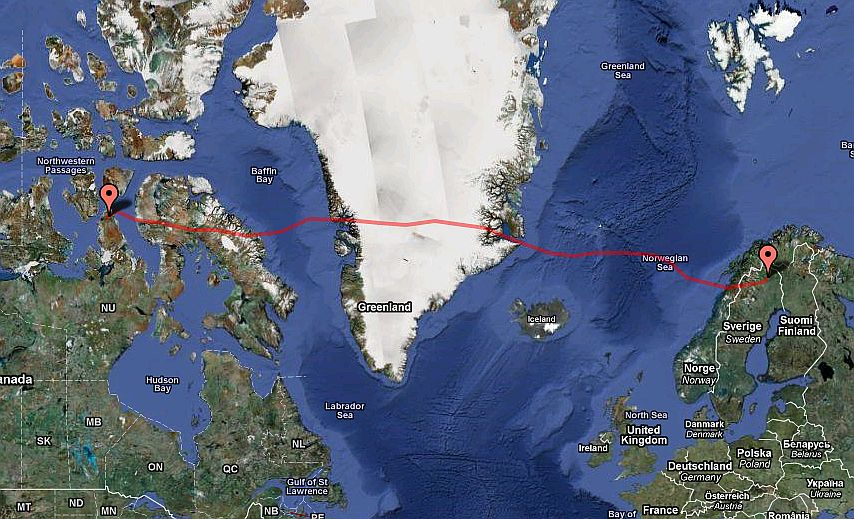
Balloon launched on: 6/13/2011 at 23:12 utc
Launch site: European Space Range, Kiruna, Sweden
Balloon launched by: Columbia Scientific Balloon Facility (CSBF)
Balloon manufacturer/size/composition: Zero Pressure Balloon Winzen - 39.570.000 cuft (0.8 mil)
Flight identification number: 620N
End of flight (L for landing time, W for last contact, otherwise termination time): 6/18/2011 at 0:10 utc
Balloon flight duration (F: time at float only, otherwise total flight time in d:days / h:hours or m:minutes - ): 4 d 1 h
Landing site: Somerset Island, Nunavut, Canada
Payload weight: 2100 kg
The balloon was launched by dynamic method with assistance of launch vehicle (Hercules) at at 23:12 utc on June 13, 2011.
After an initial ascent phase the balloon reached float altitude and started the westward flight path that would take it to Canada after crossing Sweden, Norway the North Atlantic and Greenland.
After a total flight time of four days and one hour, the mission was terminated. The payload landed on Somerset Island, Nunavut Territory, Canada, and was recovered a few days after using an helicopter.
The main scientifics objectives of the flight were to measure thermospheric neutral winds and to study the ionosphere and thermosphere interaction in the polar cap during the summer. To understand the Joule heating in the high latitude region which has a great impact on thermosphere global circulation. To provide a better understanding of the energy transfer process from the solar wind to magnetosphere, ionosphere and thermosphere.
Is expected that the observational results will have a great impact on space weather research and will help to predict the ionosphere variation related to the thermosphere motion.
External references
- HIWIND home page at High Altitude Observatory website
- Effects of magnetospheric lobe cell convection on dayside upper thermospheric winds at high latitudes Geophysical Research Letters, 43, 8348
- HAO balloon takes to the skies UCAR & NCAR Staff Notes
- HiWIND Balloon Campaign Under Way in Kiruna at EISCAT's blog
- HiWind indeed: sampling the air flow far above Earth UCAR Magazine, September 8th Issue
- HIWIND Observation of Summer Season Polar Cap Thermospheric Winds Journal of Geophysical Research: Space Physics, Volume 124, Issue 11, pp. 9270
- HiWind successfully launched at SSC web site
- Impact of HIWIND balloon measurements on thermospheric density models Journal of Geophysical Research: Space Physics Volume 119, Issue 4, pages 2476-2483, April 2014
- List of balloons launched from ESRANGE SSC Space website (via Archive.Org)
- What Do the New 2018 HIWIND Thermospheric Wind Observations Tell Us About High-Latitude Ion-Neutral Coupling During Daytime? Journal of Geophysical Research: Space Physics, 124, 6173
10150If you consider this website interesting or useful, you can help me to keep it up and running with a small donation to cover the operational costs. Just the equivalent of the price of a cup of coffee helps a lot.

